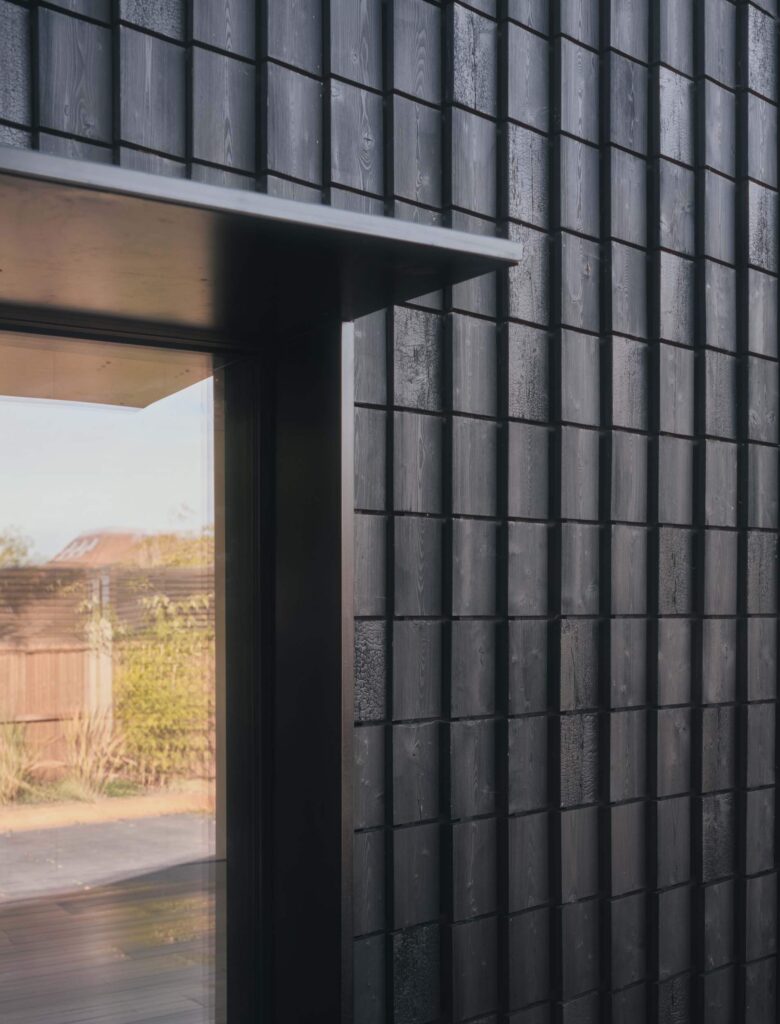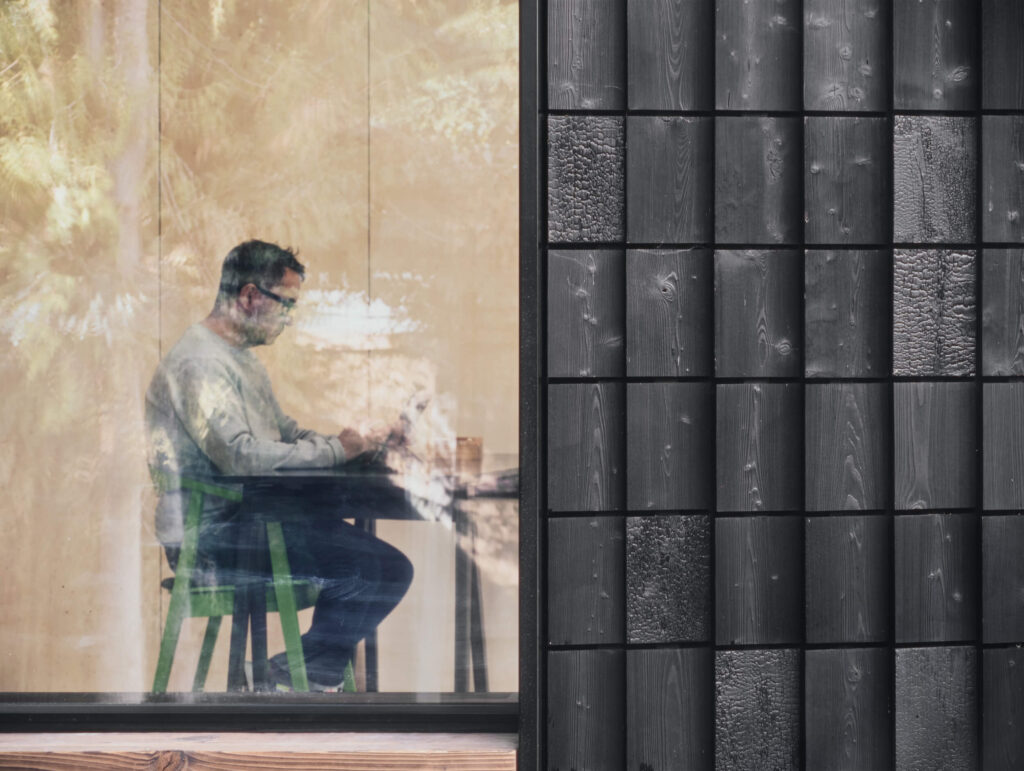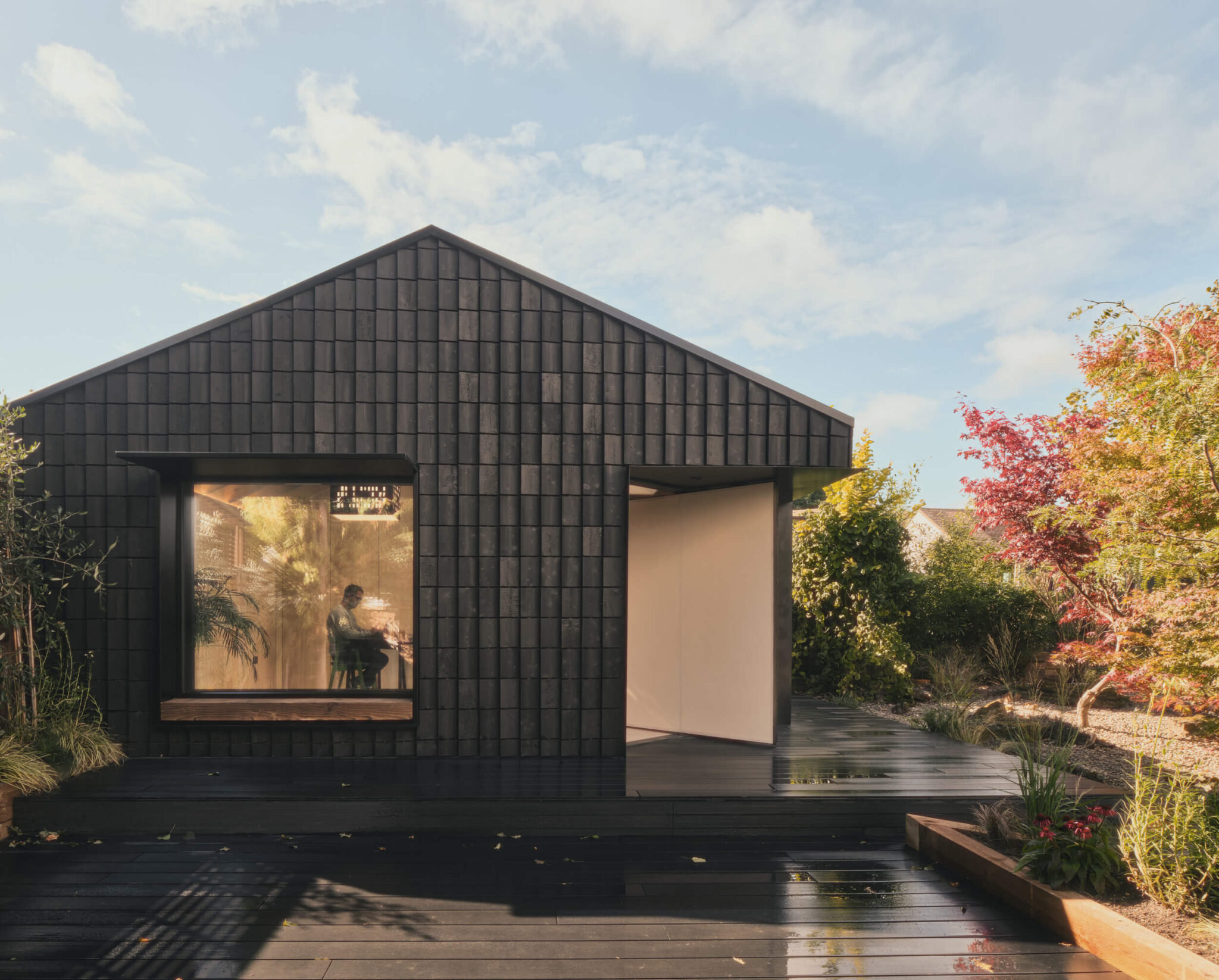Hyperspace Studio are making a real name for themselves for their sustainable approach to design. This unique project in Tring is a case in point, as founder Olli Andrew explains
What is the ethos behind Hyperspace Studio?
Founded in 2020 Hyperspace embraces the idea that architecture can do much more. After working for 10 years in some of the leading practices in the UK and across the pond in the USA, I realised how uninterested big practices were in sustainability. Hyperspace was created to right this wrong. A transparent, ecologically minded studio that is at the forefront of sustainable timber building practices. We blend exciting, modernist utopia ideas with pragmatic sustainable construction methods. We believe in joyous exciting architecture which can boost biodiversity and give back to the planet.
Is DarkMatter typical of the projects you have taken on since launching?
DarkMatter was definitely out of the blue, I actually went to visit the collaborator Wayne to design a rear extension to his house. Things change as they often do in life, he rang me some weeks later to ask if I’d design him a garden studio from a tired looking garage. Naturally I love a challenge and said, sure when can we start!? I don’t think I could pin down a typical Hyperspace project, however all of our projects follow the circular economy principles. What I mean by this is we thoroughly analyse the existing building to see what we can be reused, recycled and reimagined.

What was the initial brief and whereabouts in Hertfordshire is it located?
It’s located in the beautiful market town of Tring, and the garden studio is situated in a beautifully mature garden on a private road.
The brief was simple: reimagine the tired standalone 1980s garage for a work from home studio. Wayne was very conscious of the environmental impact so we carefully considered reusing as much of the existing structure as possible. Painstakingly we reused the walls, floor and while the roof is completely new, the old roof was dismantled and reused in the project.
Wayne is in design recruitment, he spends a lot of time on video calls. He requested that the studio be acoustically sound, light and have a minimalistic but textured background for calls. In addition to this he wanted to work flexibly come rain or shine, we therefore created window stoops (seats) on the exterior that have cover. He is now known for taking calls in the rain.
What challenges did you face?
The most challenging element to build was the facade. The 850 larch timber scales that wrap the exterior of the building are truly unique. Therefore we had to prototype the facade, we worked through five prototypes before we came to a buildable solution. We work through a process of digital 3D models, 3D printing scale models and then 1-1 prototypes. Once finalised we prefabricated the facade offsite in panels, which then arrived on site to be erected and installed in a day.
What was your starting point?
We always start any project with hand sketches, hours of sketching will produce three sketch options which we present to the client. The options are usually vastly different with a key idea behind each. Once an option is chosen it’s developed with client input into a buildable solution.
The original sketches for DarkMatter had the light chimneys, pivoting door and exposed timber beams, however it didn’t have the highly innovative facade. This came through development and frankly my interest in how we can learn from nature.

Tell us about the facade and where the project gets its name…
As mentioned the facade is a one off bespoke piece, a tapestry of timber scales form the exterior facade. The timber is larch, we adopted an ancient Japanese process called Yakisugi. Yakisugi takes timber and burns the timber to form a blackened or charred finish. This process naturally creates a protective layer for the timber. This technique has been used for thousands of years in Japan to protect against water and rotting as well as insect damage. The tapestry of scales uses a differing intensity of burning, so some of the scales are crackled, some are smooth and some have scorched marks. It’s this palette of char that determines the name DarkMatter.
How did you look to encourage biodiversity in the garden with the design?
Our facade uses 850 scales, each is set on a grid, they are offset from one another by 10mm and are angled at 15 degrees. It’s this precision which creates the true beauty. Due to the angle and the offset, crevasses form. This was a conscious design decision to form a layer which could be inhabited by nature. Modern building techniques have ensured that our buildings are impenetrable to nature causing a detrimental effect on biodiversity. While the facade is a controlled layer (waterproofed and air tight), the outer scales are given over to insects – and I’m glad to report with great success. Butterflies, moths, leaf cutter bees, and spiders have inhabited the space and have boosted biodiversity.
How does the interior design contrast with the exterior?
The use of the charred palette on the exterior is in high contrast to the interior. A pale muted interior is formed by lining the walls and ceiling with poplar plywood, much like the exterior precision comes into effect. Each plywood panel has been carefully crafted to align on a grid. The roof timbers are responsibly resourced from the UK and have been treated with a whitened natural oil. The interior is however disrupted by a pair of ‘light chimneys’, these blacked lantern like objects hang from the ceiling. Above them are triple glazed skylights, the idea is that when the sun shines the light chimneys mimic the dappled light of a tree. We prototyped the light chimney and used digital sun mapping software to ensure a spread of light across the interior.
How sustainable is the project?
The project is highly sustainable, with 90% of the original building being retained and reimagined; we actually minimised materials going to landfill. Other elements which couldn’t be used formed landscaping. The majority of the new materials came from a 10 mile radius including the charred timber. The building has three times the insulation values of modern building regulation ensuring it’s cool in the summer and warm in the winter. We used natural insulation including sheep wool and wood fibre teamed with recycled foil blanket technology. Heated by a mix of electric underfloor heating from a 100% renewable source and bioethanol fire powered by 100% plant extracts, the building is also sustainable to operate.

Do you have a favourite element of the completed project?
I think my favourite element is actually the bespoke pivoting door, this was custom made and is extra wide at 1400mm. You can’t just buy one of these from a door manufacturer so we worked with a local joiner to design and build this element. We covered the door in the same larch scales as the facade. As it centrally pivots it divides the entrance allowing two people to walk either side, it’s pure theatrics but that’s what architecture should be joyous and exciting.
What’s next for Hyperspace Studio?
The future excites us, we want to continue to imagine joyous ecologically conscious buildings. Whether that be one off houses, extensions, garden studios or something completely different, the future is bright. For us it’s about finding like-minded homeowners and businesses to work and collaborate with on exciting projects. As the studio grows I’m sure we will expand our work across Hertfordshire and beyond.









